Annotative Objects in BricsCAD
Annotative objects are impacted by the annotative scale setting to control their size or height. This automates the resizing of objects when plotting requirements change. When the Annotative property of an object is set to yes, the object will automatically resize according to the Annotation Scale setting. When working with annotative objects, size, height, or scale must be configured according to the plotted paper result. For Civil folks who work in decimal feet, this would be what the object would measure on paper to the tenth of an inch.
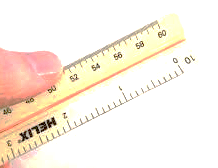
If the scale of the drawing to be plotted changes from 1:10 to 1:50, annotation must be changed so that text is bigger so it can be read, blocks are bigger so they can be seen, and the linework of hatches must increase in scale so that the patterns can be recognized.
The following objects can possess the Annotative property:
- Text (multi or single line)
- Dimensions
- Multileaders
- Blocks
- Hatches
Text
Annotative text can be placed using a text style. Once the Annotative column is clicked, the blue annotative glyph appears, and the Height value entered will be the paper text height. Also, the Match Text Orientation to Layout checkbox becomes active; clicking this option on ensures that text using this style remains oriented to the current UCS or current viewport.

Text can also be made annotative by selection. After selecting the text, use the Properties palette to set Annotative to Yes.

Notice that by making this text annotative, the Properties palette changes.
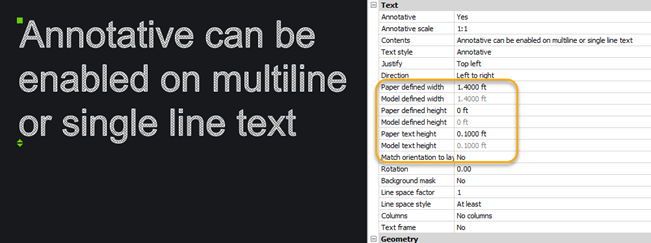
Now that the text is annotative, it has the current annotation scale added to its scale list (1:1). For this text to display for other annotation scales, those scales must be added to the scale list of this text.
To add additional scales to annotative objects, do the following:
- In the Properties dialog, click on the Annotative Scale value. An ellipsis button is revealed to the right of this value. Click on this button to open the Annotation Object Scale dialog.

- In the Annotation Object Scale dialog, notice the Object Scale List. Listed are the scales assigned to the selected object. If multiple objects are selected, this dialog would display every scale assigned to each selected objects with the setting List All Scales for Selected Objects enabled. If List Scales Common to All Selected Objects Only is enabled, any scale assigned to the objects that is not common to the selection is filtered out of the list. Click Add to continue.
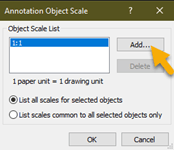
- In the Add Scales to Object dialog, all scales stored in the drawing are displayed. Select the scale(s) to add the selection. Multiple scales may be selected by pressing Ctrl while clicking individual scales; or click on a scale to indicate the beginning of a range to select, then press Shift and click the end of the range. Click OK to continue.
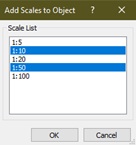
- In the Annotation Object Scale dialog, notice the addition of the selected scales from the previous dialog. Click OK to finish.
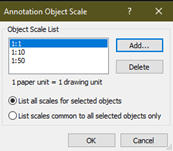
The selected objects will now display at the configured paper text height when these scales are assigned in model space or in a paperspace viewport. This method of adding additional annotation scales to a selection can be applied to any other type of annotative object (dimensions, multileaders, blocks, or hatches).
When an object with multiple annotation scales is selected, it will display itself at the size of each scale on its scale list.
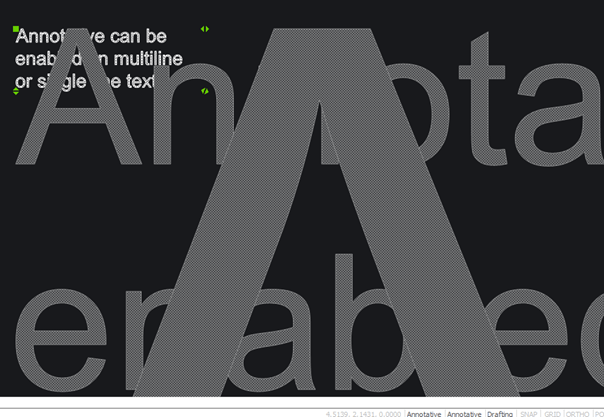
There are two system variables to be aware of that affect the visibility of annotative objects.
ANNOALLVISIBLE – This is on by default (set to 1). This will display annotative objects no matter what annotation scale is current in modelspace. When turned off (set to 0), annotation objects will not display if their scale list does not contain the current annotation scale.
ANNOAUTOSCALE – This is on by default and set to -4. When the annotation scale for the drawing is changed, that scale will automatically be added to annotative objects. When turned off (set to 0), this automation is disabled. The following values are the “on” options for this variable:
1: Newly set annotation scale is added to annotative entities supporting it except entities on locked, turned off, frozen or viewport-frozen layers.
2: Newly set annotation scale is added to annotative entities supporting it except entities on turned off, frozen or viewport-frozen layers.
3: Newly set annotation scale is added to annotative entities supporting it except entities on locked layers.
4: Newly set annotation scale is added to all annotative entities supporting it.
-1: Newly set annotation scale is not added to annotative entities (toggled value 1).
-2: Newly set annotation scale is not added to annotative entities (toggled value 2).
-3: Newly set annotation scale is not added to annotative entities (toggled value 3).
-4: Newly set annotation scale is not added to annotative entities (toggled value 4).
Dimensions
Annotative dimensions like text can be placed using an annotative dimension style. When the Annotative checkbox is clicked on, the style becomes annotative.
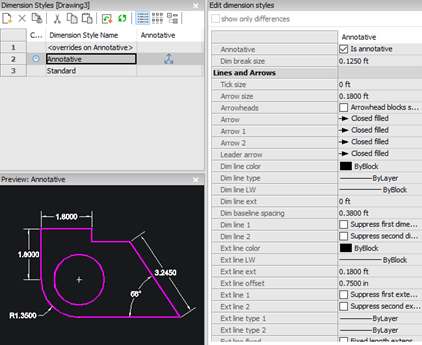
All size values configured for text, arrows, and linework will be scaled to the annotation scale. Annotative dimension styles do not require the use of annotative text styles.
Below shows the Annotative dimensions style (top) and the Standard dimension style (bottom). Both have identical size values configured. The Annotative dimension automatically scales to the current annotation scale.
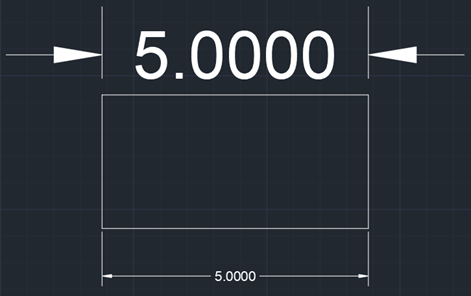
The Annotative property can be set after placing a non-annotative dimension using the Properties palette as described in the Text section above.

Multileaders
Multileaders can also be created using annotative styles. Click in the Annotative column and the annotative glyph appears. As it is with dimensions styles, All size values configured for text, arrows, and linework will be scaled to the annotation scale. Annotative multileader styles do not require the use of annotative text styles.

The Annotative property can be enabled for a multileader on the Properties palette:

Blocks
Blocks can be made annotative when created. In the Block Definition dialog, click on the checkbox next to Annotative. Notice that the Match Block Orientation to Layout Option is active when Annotative is clicked on. This can be useful if the block contains text.
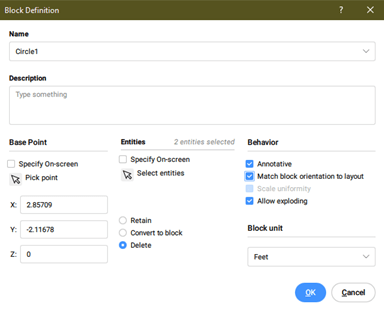
In the image below, on the left is a block of a circle at a radius of one; on the right is a circle at a radius of two.
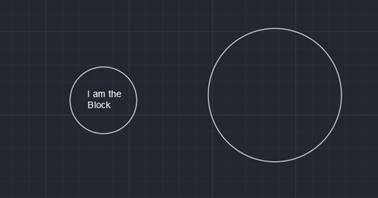
When the annotation scale is changed to 1:2, the block on the left automatically increases by the annotation scale, twice the size in this case and matches the size of the circle on the right.
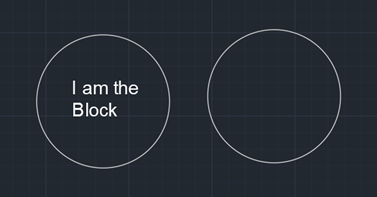
Blocks can be identified as being annotative or non-annotative on the Properties palette. However, this behavior cannot be changed here.
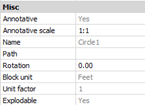
A block can be redefined to be annotative by doing the following:
- Open the Block Definition dialog (enter B at the command line).
- In the Block definition dialog, under name use the dropdown to select the block.
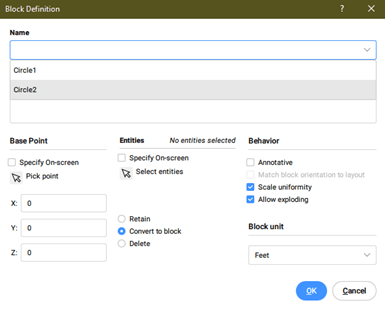
- After selecting the block, in the Behavior area, click on Annotative, and click OK.
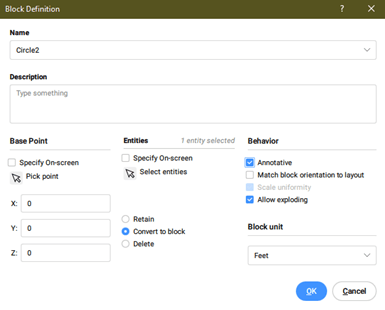
- A dialog pops up prompting to update the block definition. Click Yes to continue.
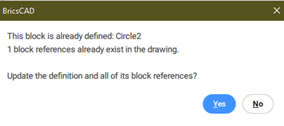
When the block is inserted in the future, it will be resized using the annotation scale.
Hatches
Hatches can be annotative when created by clicking the Annotative checkbox on in the Hatch and Gradient dialog.
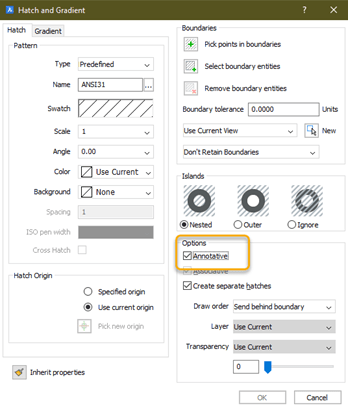
In the image below, the hatch pattern on the left is annotative while the right hatch pattern isn’t.
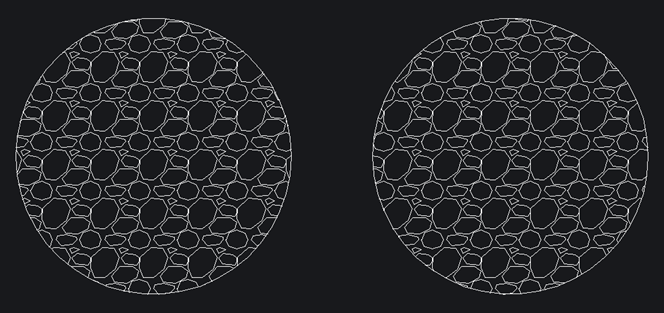
When the annotation scale is changed from 1:1 to 1:5, the hatch pattern scales accordingly.
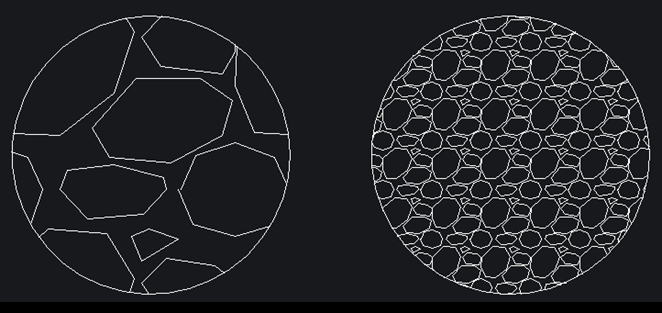
Existing hatches can be made to be annotative using the Properties palette.

Using annotative text, dimensions, multileaders, blocks, and hatches promotes efficiency when utilizing various viewport scales for plan production. The alternative is to manage the resizing of objects manually which becomes difficult when those objects must appear at more than one scale. The former method of managing was to maintain annotation for different scales in scale dependent layers which would be frozen in the viewport when not in use. Any changes to text had to be applied multiple times for each scale. Any deleted or added symbology or hatching had to be repeated for each scale. Using the annotative property enables us to maintain one instance of all annotation that can resize according to any viewport scale which enhances overall productivity, and the quality and accuracy of our plans.
